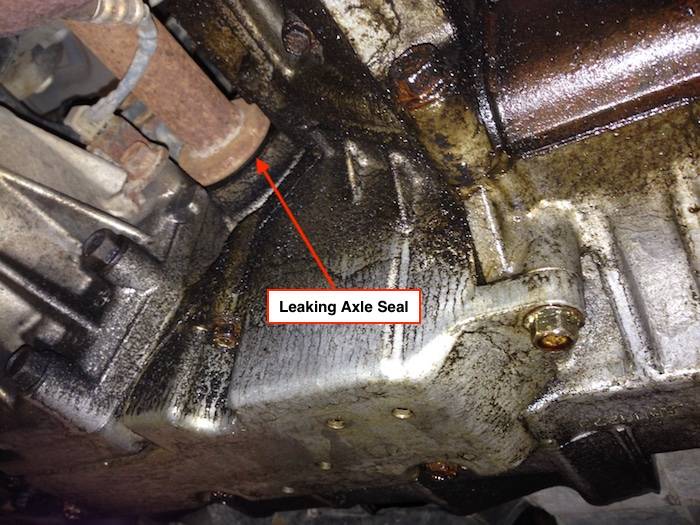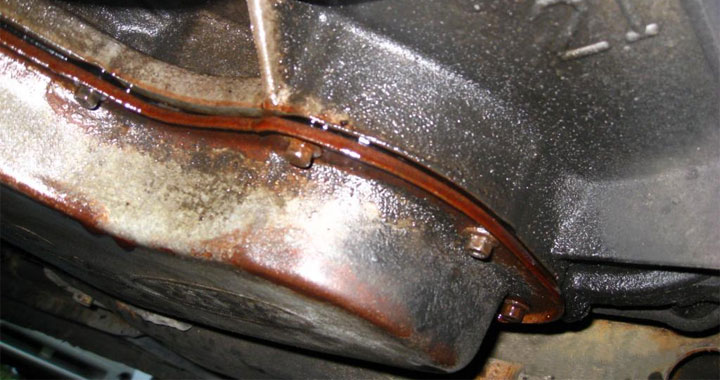Introduction
A transmission oil leak can be a major inconvenience, costing you time, money, and potentially causing further damage to your vehicle. If you notice signs of a transmission oil leak, it’s essential to address the issue promptly to avoid costly repairs. This guide will provide you with step-by-step instructions, helpful tips, and comprehensive information to equip you with the knowledge and confidence to fix a transmission oil leak effectively.

Image: at-manuals.com
Identifying Transmission Oil Leaks
Transmission oil leaks can manifest in various ways. Here are some common signs to watch for:
- Reddish or brownish fluid spots under your parked vehicle
- Low transmission fluid levels indicated on the dipstick
- Slipping or delayed gear shifts
- Unusual noises or vibrations while driving
Causes of Transmission Oil Leaks
Transmission oil leaks can occur due to several reasons, including:
- Worn or damaged transmission pan gasket
- Cracked or damaged transmission case
- Loose or misaligned bolts or hoses
- Deteriorated seals or O-rings
- Overfilled transmission fluid
Steps to Fix a Transmission Oil Leak
Safety First: Before starting any repairs, ensure your vehicle is parked on a level surface, the ignition is turned off, and the parking brake is engaged.

Image: cartreatments.com
1. Gather Necessary Tools and Parts
- Replacement transmission oil filter
- New transmission pan gasket or O-ring (if needed)
- Transmission fluid
- Drain pan
- Socket wrench or ratchet
- Clean rags or paper towels
2. Locate the Transmission Pan
- The transmission pan is usually located at the bottom of the transmission. It is typically made of metal and has several bolts holding it in place.
3. Drain the Transmission Fluid
- Place the drain pan under the transmission pan.
- Use the socket wrench or ratchet to loosen the drain plug and drain the transmission fluid into the pan.
- Allow the fluid to drain completely.
4. Remove the Transmission Pan
- Once the fluid has drained, use the socket wrench or ratchet to remove the bolts holding the transmission pan.
- Carefully remove the transmission pan, noting the location and orientation of the gasket or O-ring.
5. Clean the Transmission Pan and Housing
- Use a clean rag or paper towel to remove any old gasket or O-ring residue from the transmission pan and the housing surface.
6. Inspect and Replace the Gasket or O-ring
- Carefully inspect the old gasket or O-ring for any signs of damage or wear. If it is torn, cracked, or otherwise compromised, replace it with a new one.
7. Install the New Gasket or O-ring
- Apply a small amount of transmission fluid to the new gasket or O-ring.
- Position the gasket or O-ring onto the transmission housing.
- Carefully align the transmission pan over the gasket or O-ring.
8. Tighten the Transmission Pan Bolts
- Use the socket wrench or ratchet to tighten the transmission pan bolts in a star pattern. Tighten them to the manufacturer’s torque specifications, typically around 12-15 foot-pounds.
9. Refill the Transmission Fluid
- Insert the funnel into the transmission dipstick tube.
- Add the recommended amount of transmission fluid as per the vehicle’s manual.
10. Check for Leaks and Test Drive
- Start the engine and allow it to idle for a few minutes.
- Check for any signs of transmission fluid leaks.
- Take the vehicle for a test drive and pay attention to whether the transmission is shifting smoothly and performing as expected.
Additional Tips for Fixing Transmission Oil Leaks
- If the transmission case is cracked or damaged, it may require professional repair or replacement.
- If the leak is substantial or you are not comfortable performing the repair yourself, it is always advisable to seek assistance from a qualified mechanic.
- Regular transmission fluid changes can help prevent leaks and extend the life of your transmission.
- Using the correct type of transmission fluid specified in your vehicle’s manual is crucial.
- Ignoring a transmission oil leak can lead to severe damage and costly repairs. Therefore, it’s best to address the issue promptly.
How To Fix Transmission Oil Leak
Conclusion
Fixing a transmission oil leak can seem like a daunting task, but with the right tools, knowledge, and this comprehensive guide, you can confidently restore your vehicle to optimal condition. By carefully following each step, taking safety precautions, and addressing the issue promptly, you can save yourself time, money